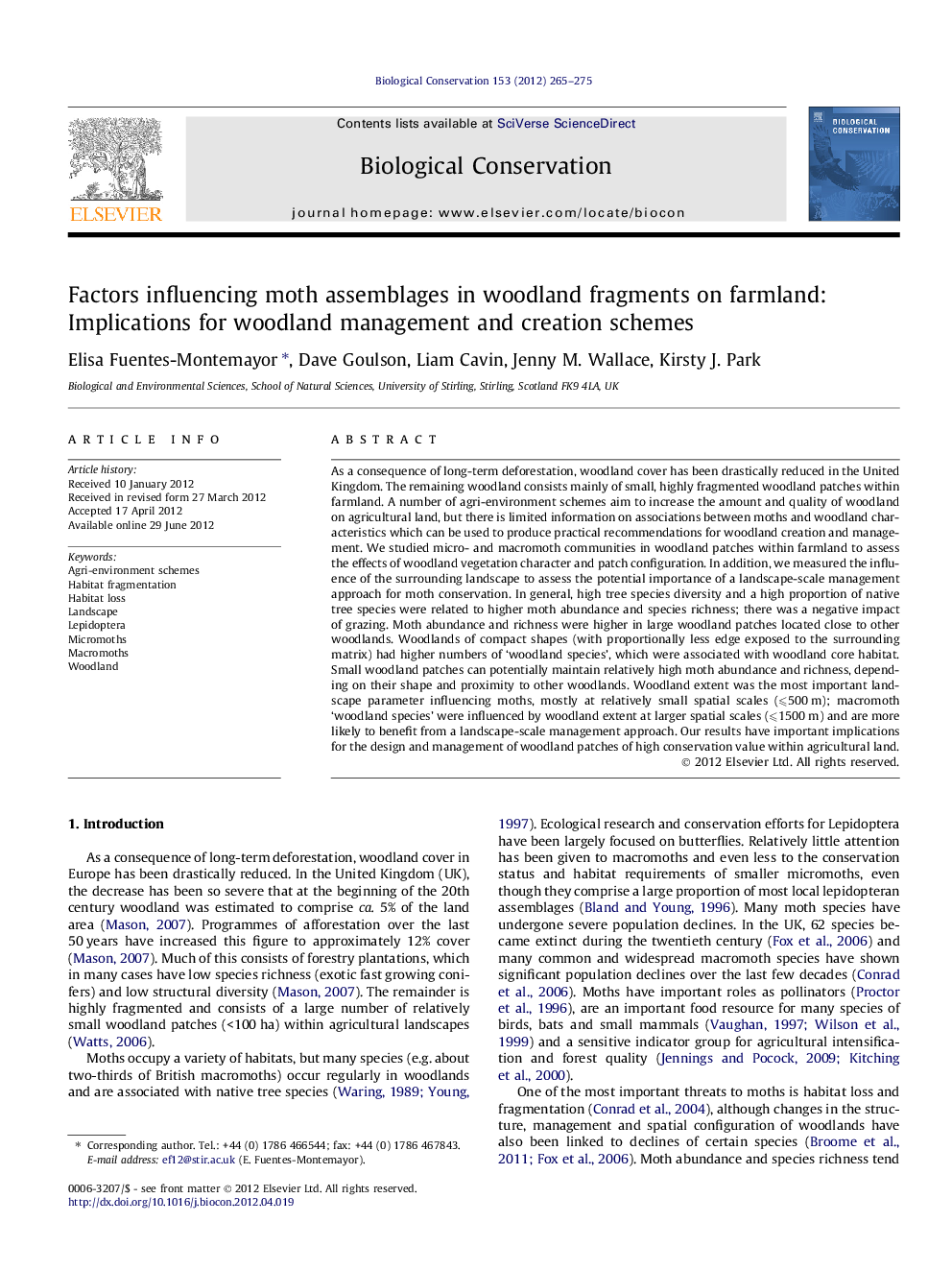| کد مقاله | کد نشریه | سال انتشار | مقاله انگلیسی | نسخه تمام متن |
|---|---|---|---|---|
| 6301164 | 1617948 | 2012 | 11 صفحه PDF | دانلود رایگان |
عنوان انگلیسی مقاله ISI
Factors influencing moth assemblages in woodland fragments on farmland: Implications for woodland management and creation schemes
دانلود مقاله + سفارش ترجمه
دانلود مقاله ISI انگلیسی
رایگان برای ایرانیان
کلمات کلیدی
موضوعات مرتبط
علوم زیستی و بیوفناوری
علوم کشاورزی و بیولوژیک
بوم شناسی، تکامل، رفتار و سامانه شناسی
پیش نمایش صفحه اول مقاله

چکیده انگلیسی
As a consequence of long-term deforestation, woodland cover has been drastically reduced in the United Kingdom. The remaining woodland consists mainly of small, highly fragmented woodland patches within farmland. A number of agri-environment schemes aim to increase the amount and quality of woodland on agricultural land, but there is limited information on associations between moths and woodland characteristics which can be used to produce practical recommendations for woodland creation and management. We studied micro- and macromoth communities in woodland patches within farmland to assess the effects of woodland vegetation character and patch configuration. In addition, we measured the influence of the surrounding landscape to assess the potential importance of a landscape-scale management approach for moth conservation. In general, high tree species diversity and a high proportion of native tree species were related to higher moth abundance and species richness; there was a negative impact of grazing. Moth abundance and richness were higher in large woodland patches located close to other woodlands. Woodlands of compact shapes (with proportionally less edge exposed to the surrounding matrix) had higher numbers of 'woodland species', which were associated with woodland core habitat. Small woodland patches can potentially maintain relatively high moth abundance and richness, depending on their shape and proximity to other woodlands. Woodland extent was the most important landscape parameter influencing moths, mostly at relatively small spatial scales (⩽500 m); macromoth 'woodland species' were influenced by woodland extent at larger spatial scales (⩽1500 m) and are more likely to benefit from a landscape-scale management approach. Our results have important implications for the design and management of woodland patches of high conservation value within agricultural land.
ناشر
Database: Elsevier - ScienceDirect (ساینس دایرکت)
Journal: Biological Conservation - Volume 153, September 2012, Pages 265-275
Journal: Biological Conservation - Volume 153, September 2012, Pages 265-275
نویسندگان
Elisa Fuentes-Montemayor, Dave Goulson, Liam Cavin, Jenny M. Wallace, Kirsty J. Park,